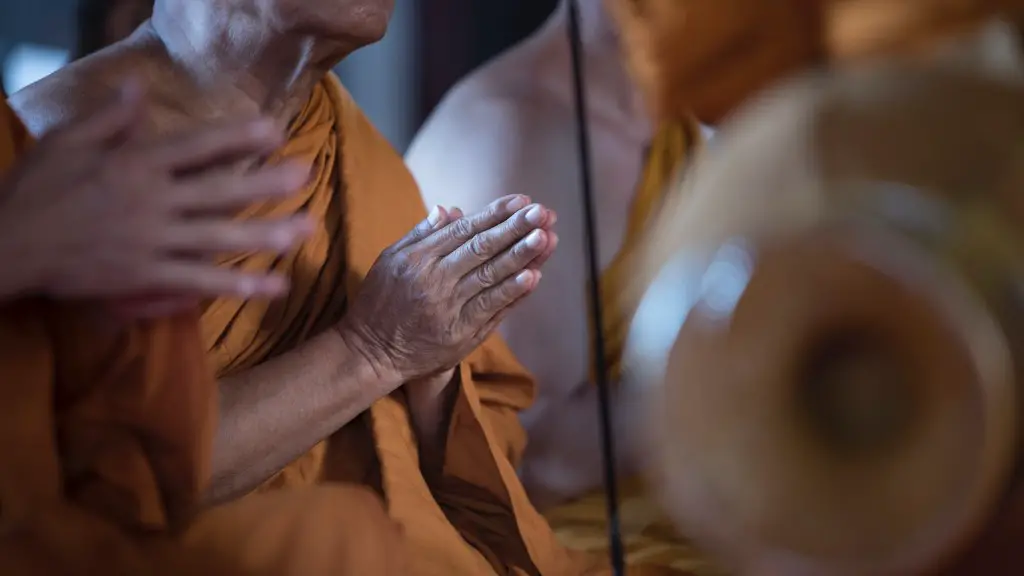Hinduism is one of the oldest religions in the world and is deeply intertwined with animal symbolism. Anyone who has ever studied Indian scriptures or customs knows that animals play an incredibly important role in spiritual practices. As a result, certain animals are sacred in Hinduism, with devotees believing that they possess special powers and are messengers from the divine.
Perhaps the most well-known sacred animal in Hinduism is the cow. Cow worship is an important part of Hinduism and the animal is deeply revered for its gentleness and unconditional love. Hindus believe that cows are holy and act as symbols of peace and purity. In many Hindu regions, cows are considered sacred and are given special protection, with it being forbidden to kill or harm them in any way.
The elephant is another animal that is highly revered in Hinduism. Hindus believe that elephants symbolize strength, wisdom, and majesty. They often have a prominent place in Hindu art and mythology, with deities such as Ganesha depicted in elephant form. Apart from this, many Hindu temples keep elephants as pets, or at least as sacred mascots.
The monkey is another animal that is sacred in Hinduism, being tightly associated with the deity Hanuman, one of the most popular gods in the religion. Monkeys are respected for their intelligence and playfulness, and are seen as symbols of devotion and loyalty. In India, monkeys are also believed to possess supernatural powers, and it is not uncommon to see them at Hindu temples and in holy areas.
The peacock is also a sacred animal in Hinduism, being closely linked to the deity Lord Krishna. The bird is seen as a symbol of beauty and prosperity, and is often used in Hindu festivals and ceremonies. Peacocks are considered to be protectors of the home and bringers of joy, and as such they are held in high esteem by devotees.
Snakes are also held in high regard in Hinduism, with many of the religion’s gods and goddesses being depicted with a snake or snakelike body. Snakes are widely worshipped in the religion, being seen as symbols of fertility, wealth, and good luck. Worshipping snakes is said to bring forth spiritual healing, and devotees often make offerings to them in temples and shrines.
The tiger is yet another sacred animal in Hinduism, and is closely associated with the goddess Durga, who is believed to ride a tiger and use it to protect the faithful against evil. The tiger is seen as a symbol of power and courage, and is believed to have the ability to protect against misfortune and adversity. The animal is often found in Hindu sculptures and religious texts, and is widely venerated in the religion.
Cow
The cow, known as ‘gau mata’ in Hinduism, is seen as an embodiment of Mother Earth. Devotees believe that the cow represents abundance, selflessness and fertility, and offer prayers and offerings in its honor. In many Hindu temples, cows are venerated and given food, water and shelter. This homage is a way of saying thanks for all that cows contribute, such as providing food, fertilizer, and jobs.
Cows are considered to be the most sacred animal in Hinduism and are highly respected for their spiritual powers. They are seen as symbols of life, and their protection is seen as a way of preserving life itself. Devotees believe that the cow will bring peace, prosperity and happiness to their lives, so the animal remains an important part of Hindu culture and spirituality.
Elephant
Elephants hold special significance in Hinduism and are often depicted as gods or as vehicles of gods. Elephants are seen as symbols of strength, intelligence and wisdom, and they are believed to possess supernatural powers. Hindus believe that the elephant is a manifestation of Lord Indra, the chief deity of the Vedic pantheon and the god of thunder and rain. Elephants also represent patience and temperance, and are seen as guardians of knowledge and sources of spiritual insight.
Hindu devotees often perform special rituals where an elephant is given offerings and bathed in sacred waters. The elephant is believed to possess the power to bless devotees and bestow them with prosperity, joy and luck. Worshipping an elephant is a way of expressing gratitude and devotion to the spiritual powers of the animal.
Monkey
The monkey holds great significance in Hinduism, as it is believed to represent Hanuman, a deity who is known for his intelligence and courage. Many Hindu temples feature sculptures of Hanuman, who is usually depicted as a monkey or with monkey-like features. Other gods and goddesses are also depicted with monkey characteristics, as the animal is seen to represent tenacity and faith.
The monkey is also associated with Lord Krishna, the eighth incarnation of Vishnu, the supreme Hindu god. It is believed that Krishna takes the form of a monkey to protect his devotees from harm. Monkeys are highly respected in Hinduism and are seen as loyal and devoted servants of the gods. Worshipping a monkey is seen as being an expression of devotion to the divine.
Peacock
The peacock holds an important place in Hinduism, and is often associated with Lord Krishna. The peacock is seen as a symbol of renewal, prosperity and joy, and devotees believe that it can bring good luck and protection. The feathers of a peacock are used in many Hindu ceremonies as offerings to the gods, and the bird is seen as a symbol of honor and reverence. Peacocks are also believed to have a special connection to the divine, being seen as messengers to the gods.
Hindus also believe that the peacock has the power to ward off evil and bring success. Many Hindu temples feature images of peacocks in the form of sculptures, paintings and murals. The bird is also seen as a symbol of fertility and abundance, and offering prayers to the peacock is believed to bring good fortune and prosperity.
Snake
In Hinduism, the snake is seen as a powerful and mysterious creature, often taking the form of a deity. Hindus believe that snakes have the power to bestow blessings and bring forth spiritual healing, so devotees often make offerings to them in temples and shrines. Snakes are often seen in sculptures, images and religious texts, and they are believed to possess supernatural powers. Indians have a long history of worshipping snakes, and they still do so today.
In the Hindu religion, snakes are seen as symbols of fertility, wealth and good luck. They are believed to be protectors of the home and bringers of joy, and are often worshipped in Hindu ceremonies. Hindus also believe that snakes possess healing powers, so they often make offerings and prayers to them in the hope of gaining spiritual healing.
Tiger
In Hinduism, tigers are seen as powerful and fierce creatures, with the animal often being associated with the goddess Durga. Durga is believed to mount a tiger and use the animal to protect the faithful against evil. The tiger is seen as a symbol of power and courage, with devotees believing that it can protect against misfortune and adversity. Tigers are often depicted in Hindu sculptures, paintings, and religious texts, and are widely venerated as sacred animals.
Tigers are also associated with Lord Shiva, the third deity in the Hindu trinity, who is often shown riding a tiger. This image is seen as representing power, and worshipping the tiger is believed to bring forth spiritual healing and strength. Hindus also believe that the tiger is a symbol of protection and strength and will bring good luck and success to those who venerate it.



